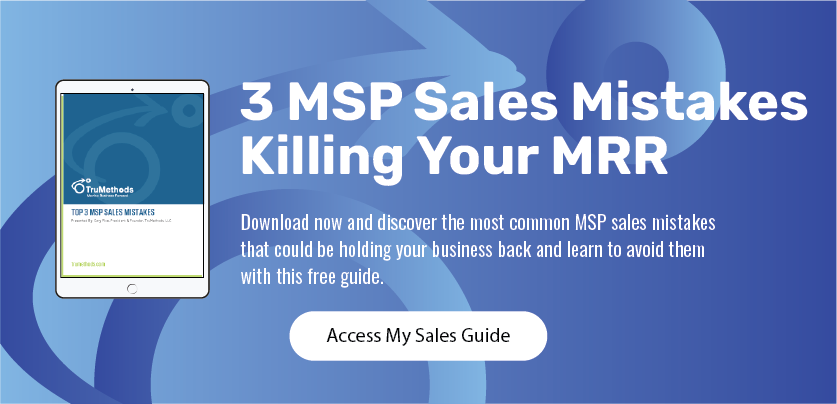If you’ve been a TruMethods member for a while, you’re more than likely in the process of creating your sales plan for 2022. In fact, if you’re a World Class MSP, you probably already have a plan ready to go for the new year. But if you’re new to TruMethods or have been having a rough year, you’re probably focusing your efforts elsewhere.
While it’s great to have sales goals, they must also be reachable. Without a sales plan in place, your salespeople will struggle with hitting their sales goals. A sales plan ensures there is a path for them to follow.
There are three things you should consider before creating your sales plan for 2022 if you haven’t already started the process.
Putting your sales situation into perspective
Before creating a sales plan for your business, you need to first put your sales situation into perspective. What does that entail? Simply put, getting your numbers together. What’s your churn rate? What about required changes in revenue mix, average monthly recurring revenue (MRR) and all-in seat price (AISP)? You also want to look at your salespeople’s close ratios, what your sales team is doing to create clear separation in the sales process, and whether your salespeople are presenting too early to prospects. The more data you can pull together, the better the plan will be.
How did your sales team fare in 2021?
Then assess how your sales team fared in 2021. Did your salespeople reach their MRR goals? If they didn’t, why didn’t they? What about new clients, average MRR, non-recurring revenue (NRR) and the AISP of new clients sold? How much in new MRR did your salespeople generate in 2021? When evaluating your organization’s 2021 sales results, your goal should be to look under the hood of your business to determine where your salespeople can improve and help them with getting there in 2022.
What’s in your sales pipeline?
Your salespeople must have access to a well-organized prospect database if you want them to sell successfully at the right price. If they didn’t generate enough MRR in 2021, your prospect database may need some work. First, look at how many companies are in your database. What do you know about them? Did you categorize them into buckets? After that, it’s time to evaluate growth. How much did your prospect database grow over the course of the year? How could you have grown it faster? And finally, what size should your list be? How many suspects and prospects are in your database? Keeping your database up to date and clean is key to selling more MRR at the right price.
You should already be well into the sales planning process for 2022, but if you’re not, today is the day to begin putting your sales situation into perspective, assessing how your sales team fared in 2021, and tweaking your sales pipeline for 2022.



